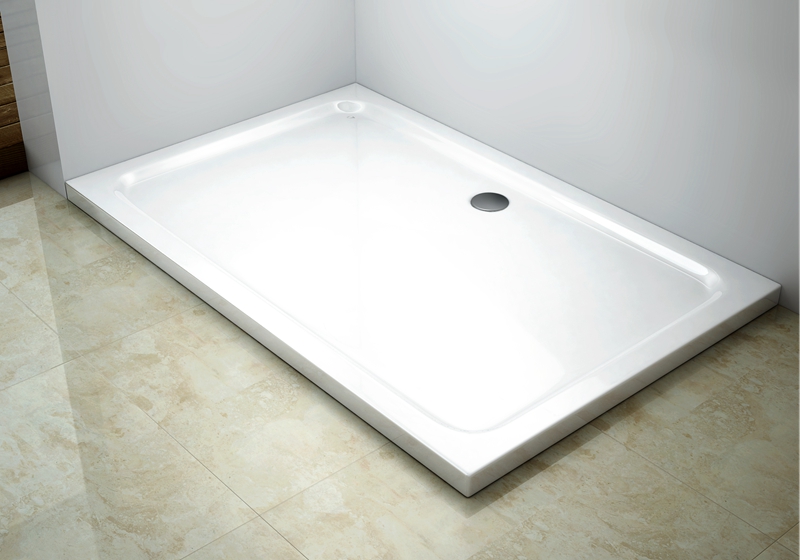Designing the drainage of an ABS (Acrylonitrile Butadiene Styrene) shower tray to drain water efficiently involves several key considerations. The goal is to ensure that water flows smoothly into the drain, preventing standing water and reducing the risk of leaks or overflow. Here's a detailed guide on how to achieve efficient drainage in an ABS shower tray:
Tray Slope and Gradient
Design Principle: The surface of the shower tray should be sloped towards the drain to facilitate water flow. The recommended slope is typically between 1-2% (1/4 inch per foot).
Implementation: During the design phase, ensure the shower tray has an even gradient from the edges towards the drain. The slope should be uniform to avoid water pooling.
Drain Placement
Central Placement: Placing the drain in the center of the tray ensures that water from all directions flows towards the drain. This is the most common and efficient design.
Offset Placement: In some designs, the drain is offset towards one side. This can be effective if the tray shape or space constraints dictate, but it requires careful sloping to ensure water flows towards the offset drain without pooling.
Drain Size and Type
Size: The drain should be large enough to handle the maximum flow of water from the showerhead. A typical shower drain is 2 inches in diameter, but high-flow showerheads may require larger drains.
Type: Choose a drain that is designed to prevent clogging and can handle hair and other debris. A removable trap or strainer is recommended for easy cleaning and maintenance.
Surface Finish and Texture
Smooth Surface: The surface of the ABS shower tray should be smooth to minimize resistance to water flow.
Anti-Slip Texture: While ensuring efficient drainage, it's also important to maintain a non-slip surface to ensure safety. Textured finishes can be designed in a way that does not impede water flow.
Waterproof Sealing and Edges
Edge Design: The edges of the shower tray should be slightly raised to prevent water from spilling over and to direct it towards the drain.
Sealing: Proper sealing around the edges and the drain is crucial to prevent water from leaking underneath the tray. Use high-quality waterproof sealant and ensure a tight fit.
Drainage Channels and Grooves
Channels: Incorporate subtle drainage channels or grooves into the surface design to guide water towards the drain. These should be designed to not compromise the aesthetics or safety of the tray.
Groove Pattern: A radial or concentric pattern around the drain can be effective in guiding water towards the central drain point.

Material Considerations
ABS Characteristics: ABS is a non-porous material, making it ideal for water-resistant applications. Ensure the material is adequately supported to maintain its shape and slope under load.
Reinforcement: Reinforce the ABS tray structure to prevent sagging over time, which can affect the slope and drainage efficiency.
Installation and Alignment
Level Installation: Ensure the shower tray is installed level with the correct slope. Any deviation can cause water to pool and not drain efficiently.
Subfloor Preparation: Prepare the subfloor to support the tray evenly and provide the necessary slope towards the drain.
Maintenance Access
Easy Access: Design the drain area for easy access to allow regular maintenance and cleaning of the drain.
Inspection: Allow for periodic inspection of the drainage system to ensure there are no blockages or leaks.
Regulatory Compliance
Building Codes: Ensure the design complies with local building codes and plumbing regulations regarding shower tray drainage.
Safety Standards: Adhere to safety standards for water drainage and anti-slip properties.
Example of Drainage Design
Central Drain Design: The shower tray features a central drain with a slope of 1.5%. The edges are raised 5mm higher than the central drain, ensuring that water flows naturally towards the drain.
Groove Pattern: A radial groove pattern is incorporated around the drain to guide water effectively, and a removable drain cover allows for easy cleaning.
Surface Finish: The surface is smooth with a slight texture to prevent slipping while not impeding water flow.
Efficient drainage design in an ABS shower tray involves careful consideration of slope, drain placement, material characteristics, and ease of maintenance. By focusing on these aspects, you can ensure that the shower tray effectively manages water flow, minimizes standing water, and maintains hygiene and safety.




 English
English Deutsch
Deutsch
















